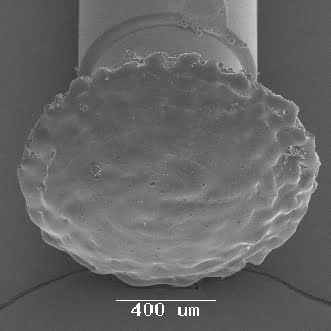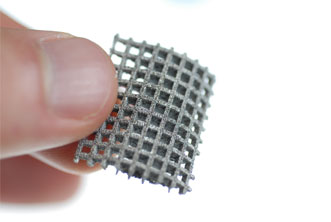Selective laser micromelting enables processing of new materials that could be useful in medical implants.

An electrode head coated with platinum-iridium using selective laser micromelting. Courtesy of Laser Zentrum Hannover.
Researchers at Laser Zentrum Hannover EV and the University of Rostock used the additive process to coat electrodes for pacemakers with a platinum-iridium alloy.
This represents the first time platinum has been successfully processed at the microscale, the researchers said. Platinum could be useful for pacemakers because it has excellent electrical conductivity characteristics and is bioinert.
Selective laser micromelting was also used to produce 3D lattice structures made of nickel-titanium (NiTi) with 90-μm resolution.
NiTi is a shape-memory alloy, a material that returns to its original shape after deformation. Already widely used in medical technology, NiTi presents new for micro implants such as custom stents and bone replacements.

A three-dimensional structure made of nickel-titanium.
The micromelting technique was also applied to the creation of stainless stent structures with a closed cell design and mechanical characteristics similar to those of conventional stents.
The work was carried out under the German Federal Ministry for Education and Research's REMEDIS project.
For more information, visit www.lzh.de.